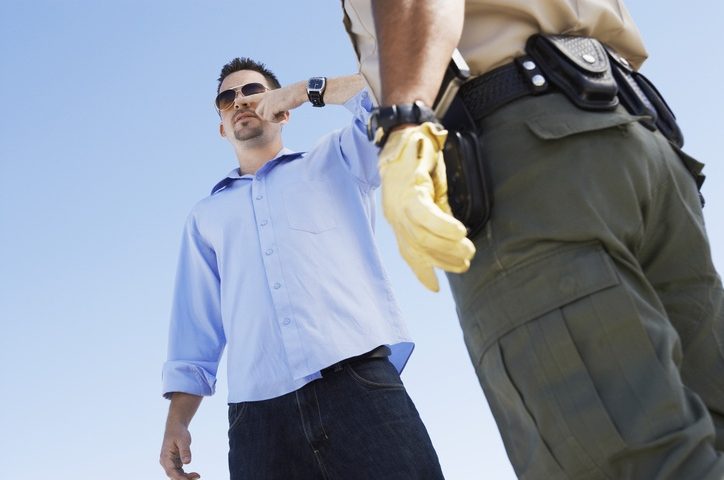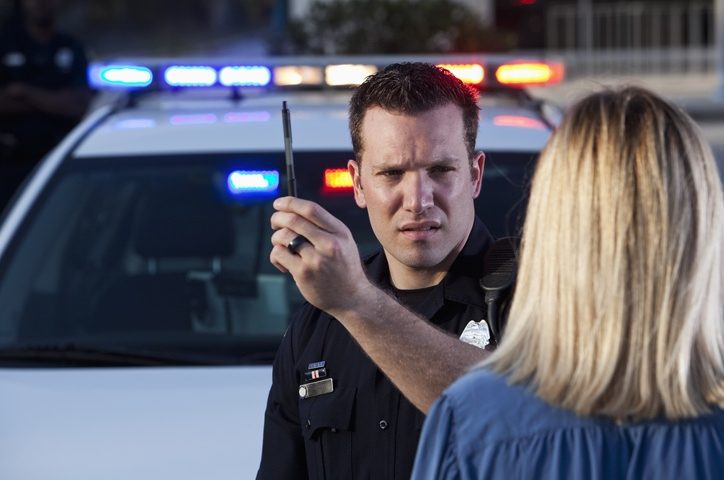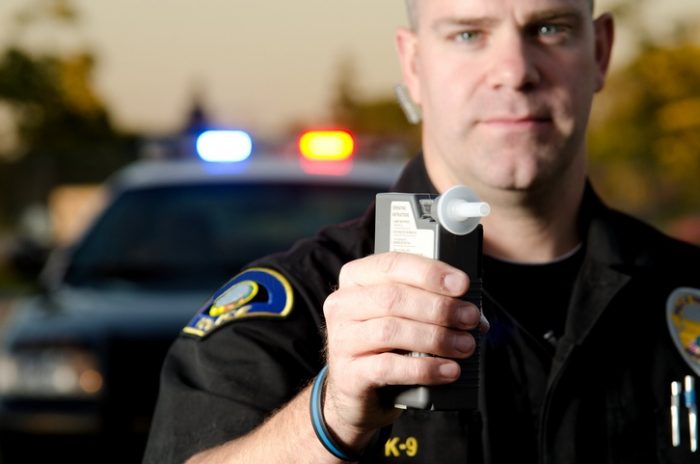
Are Field Sobriety Tests Accurate?
Call Houston DWI Lawyer Clyde W. Burleson at ☎ 713-628-1503 For a Free Consultation
Field sobriety tests are used to provide cause for a arrest that are necessary for a DWI conviction. These tests were created by the National Highway Traffic Safety Administration (NHTSA) in the mid to late 1970s. By 1981 police officers began to administer these SFSTs on individuals suspected of DWI. The problem with these three tests is that they are flawed in several ways and do not provide a scientific or consistent determination of intoxication.
1. Horizontal Gaze Nystagmus (HGN) Field Sobriety Tests
Nystagmus is a condition of involuntary (or voluntary, in some cases) eye movement, acquired in infancy or later in life, that may result in reduced or limited vision. Due to the involuntary movement of the eye, it has been called “dancing eyes”. A drunk person will have difficulty in tracking a moving object and the jerking movement will be greatly exaggerated. Officers performing a HGN test are looking for 3 clues per eye (6 total) that they can use to determine that you are over the legal blood alcohol content (BAC).
- Lack of Smooth Pursuit – The eyes are unable to follow a moving object – such as a pen – smoothly.
- Distinct and Sustained at Maximum Deviation – The jerking of the eye is more apparent when the eye is looking as far into its periphery as possible.
- Onset of Nystagmus Prior to 45 Degrees – Eye jerking increases when within 45° of center.
Failing 4 will lead to arrest. In addition, while the NHTSA manual is extremely specific about what an officer must do when performing this test, it is ultimately a test that is 100% up to the opinion of the arresting officer.
2. Walk and Turn (WAT) Test
The Walk and Turn is a test of divided attention. There are 2 stages of this test:
- Instruction Stage – A recipient must stand in a heel-to-toe position with their arms at their sides and listen to the instructions given by an officer.
- Walking Stage – The recipient must take 9 heel-to-toe steps, turn, and take another 9 heel-to-toe steps back to the starting point.
After that, the officer will look for 8 different clues to determine inebriation. Failing 2 will lead to arrest.
- Can’t Keep Balance During Instructions
- Starts Too Soon
- Stops Walking
- Doesn’t Touch Heel to Toe
- Steps Off Line
- Uses Arms for Balance
- Loses Balance on Turn / Turns Incorrectly
- Takes the Wrong Number of Steps
Failing 2 will lead to arrest. Once again, the scoring is completely subjective and 100% up to the opinion of the arresting officer. In addition, they do not take into account any past or present injuries.
3. One-Leg Stand (OLS) Field Sobriety Tests
The One-Leg Stand is another example of a divided attention test.
1. Instruction Stage
- Stand with your feet together and your arms at your side (demonstrate).
- Maintain position until told otherwise.
- When I tell you to, I want you to raise one leg, either one, approximately 6 inches off the ground, foot pointed out, both legs straight and look at the elevated foot. Count out loud in the
- following manner: 1001, 1002, 1003, 1004 and so on until told to stop.
- Do you understand the instructions?
- You may begin the test.
2. Testing Stage
There are four cues or clues that a police officer is looking for on the One-Leg Stand Test. Failing 2 will lead to arrest.
- Sways while balancing
- Uses arms to balance
- Hops
- Puts foot down
Much like the first two tests, the majority of this is subjective and doesn’t take into account any past or current injuries or even physical condition of the test recipient.
Limitations & Criticism of Field Sobriety Tests
Critics of these test often question the statistical evidence behind them, and the ability of the officers to administer the tests and judge for impairments. For instance, a study by Patrick Barone in “Standardized Field Sobriety Testing” asked 14 police officers to view the videotapes of 21 sober individuals being put through a series of both field sobriety tests and “normal-ability” tests such as walking, knowing their address, and similar. After that, the officers believed that 46% of the participants had too much to drink. In addition, 15% of the officers viewing the normal-abilities videos thought the individuals had too much to drink.
In “Field Sobriety Tests: Are They Designed for Failure?”, the authors concluded that SFSTs must be held to the same standards the scientific community expects of any reliable and valid test. In addition, the NHSTA initially started with 6 tests as part of their research. In the end, they chose 3 as sufficiently reliable and accurate:
-
The Horizontal Gaze Nystagmus (HGN) Test – 77% Accuracy
-
The Walk-and-Turn (WAT) Test – 68% Accuracy
-
The One-Legged Stand (OLS) Test – 65% Accuracy
Call Clyde W. Burleson, P.C., Expert in Field Sobriety Tests
Above all, the science used for Standardized Field Sobriety Tests is flawed. In other words, don’t leave your future in the hands of opinions and pseudoscience posing as fact. Contact Clyde W. Burleson, P.C. and make sure that your rights are being protected!




